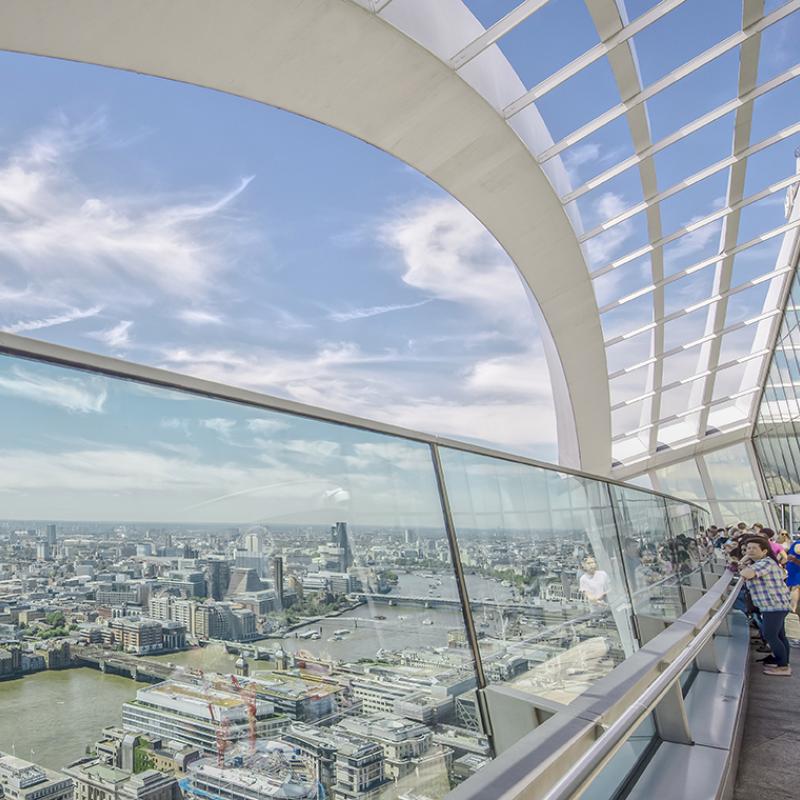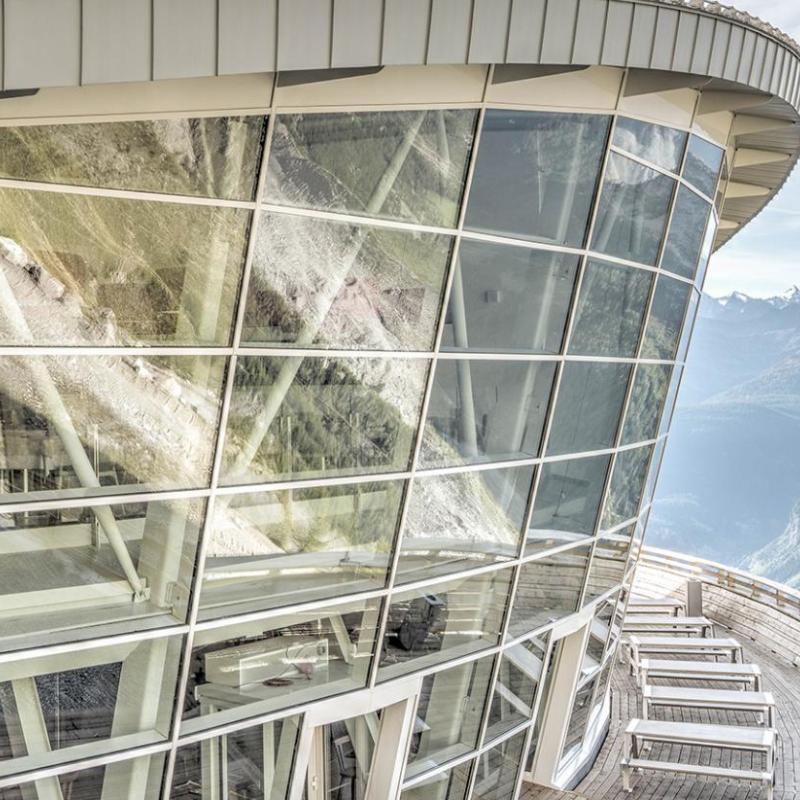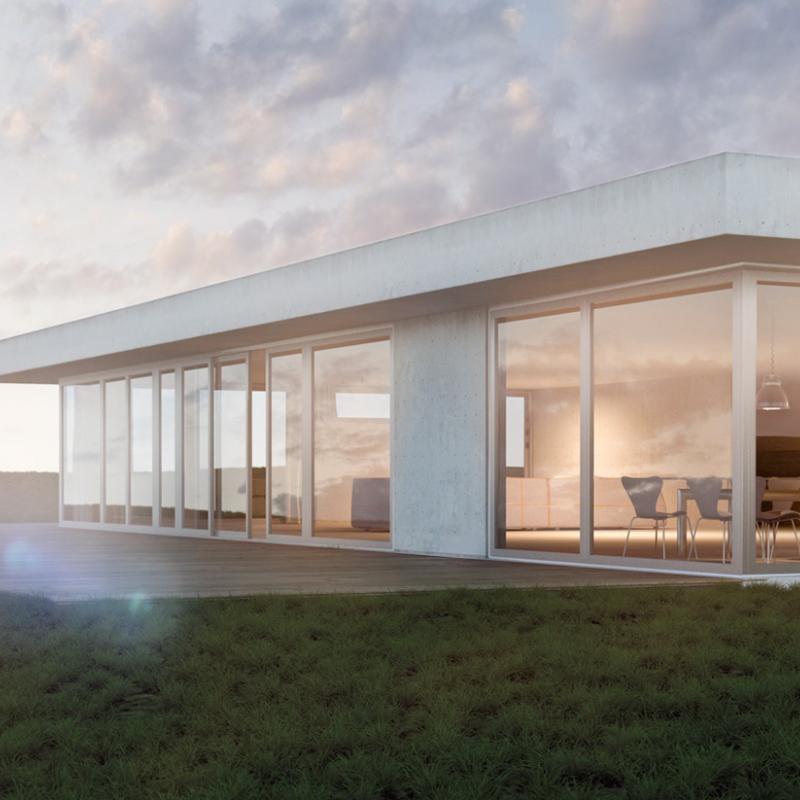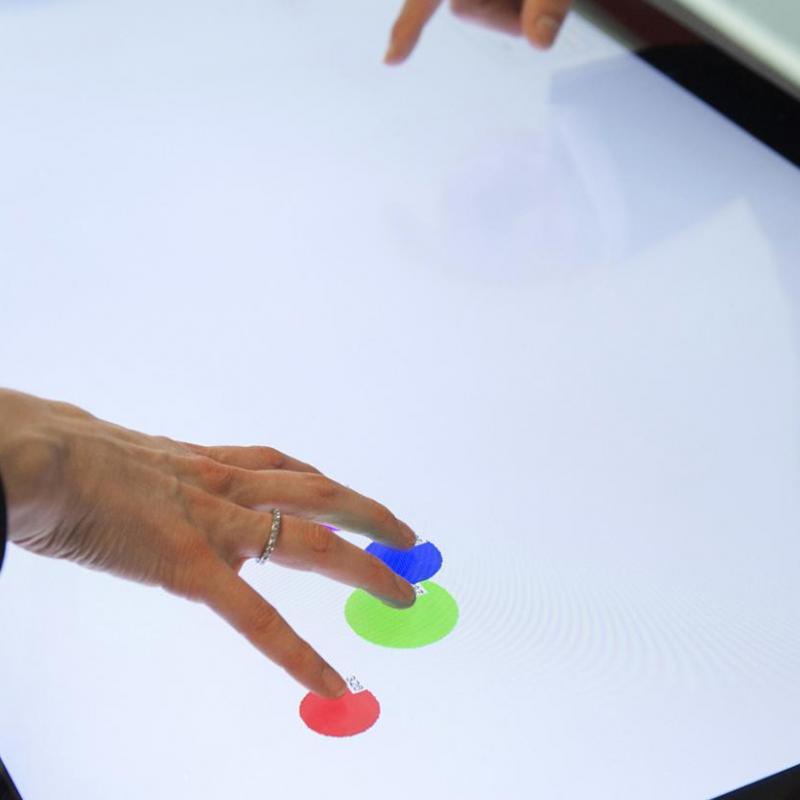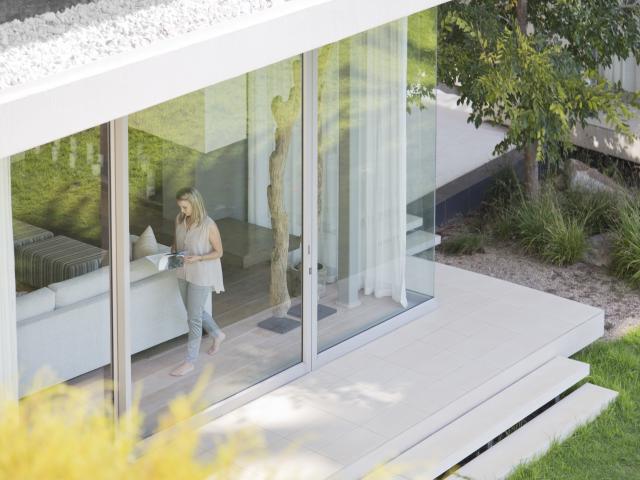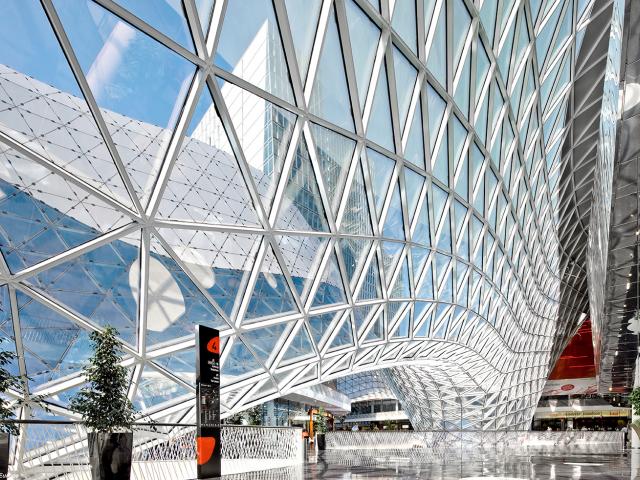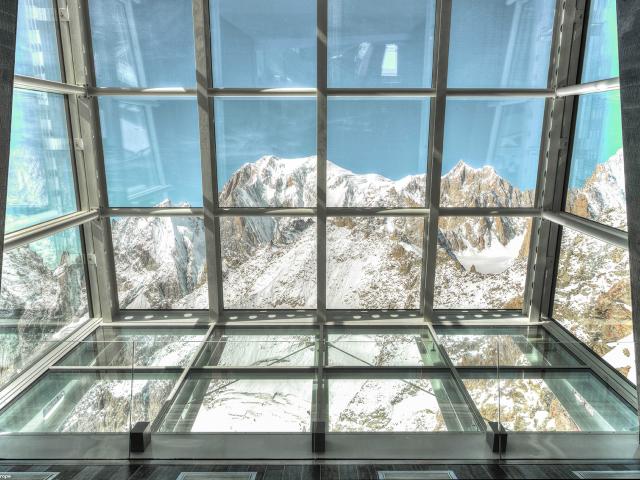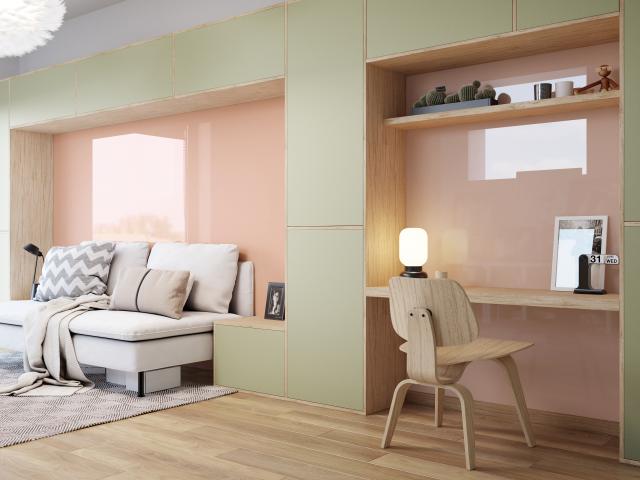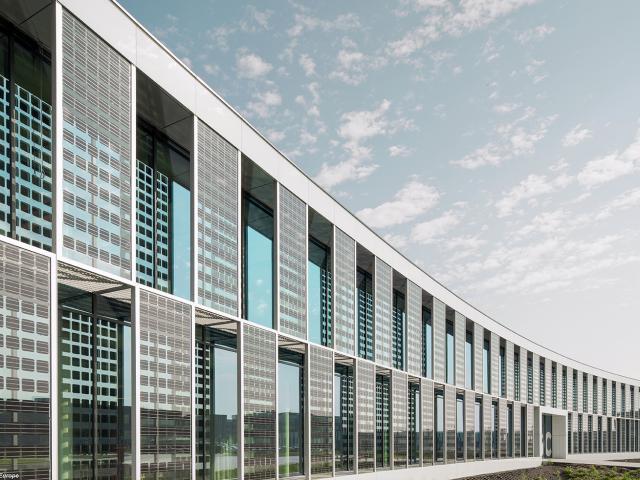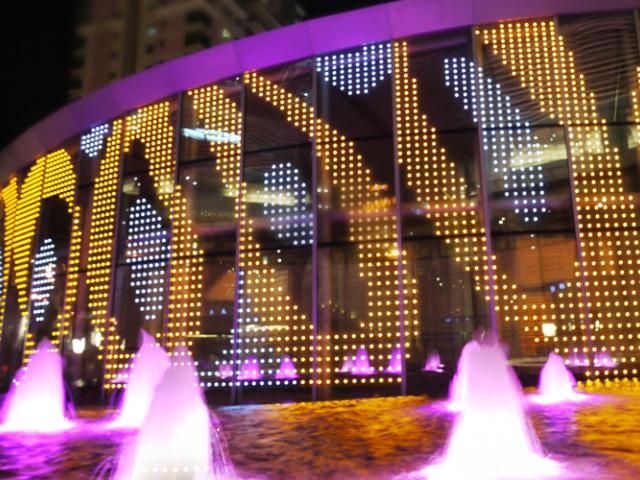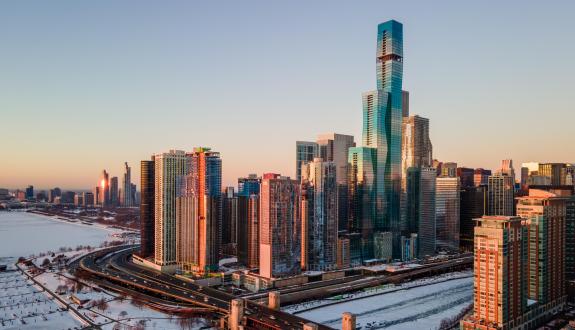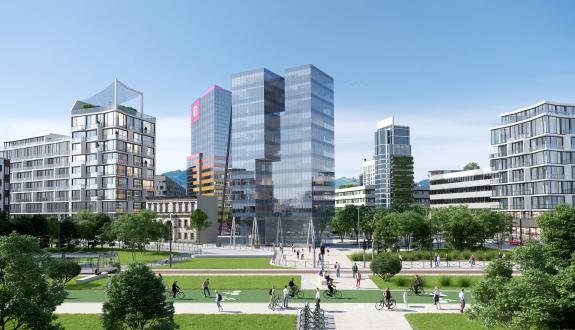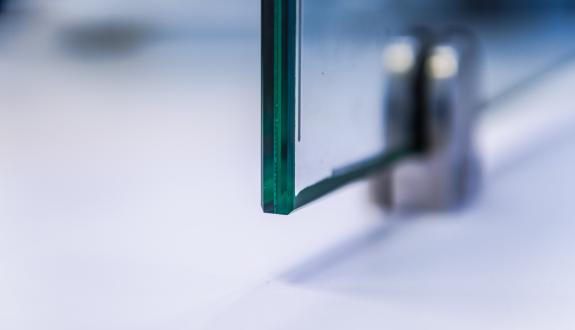The versatility of glass
Whether home or workplace, modern buildings have to be energy-efficient, safe, aesthetically pleasing and comfortable for the occupants. They can even generate energy and communicate. All these functions can be met by glass for the construction industry and other advanced industrial sectors.
Thermal insulation
Superinsulating coated glass reflects heat from the building back into the interior, so preventing heat loss and contributing to the comfort of the occupants. These types of glass can be assembled into double or triple glazing. Their insulating power can be further enhanced by filling the inter-glass space with noble gas (argon or krypton).
Double glazing with superinsulating coated glass has twice the insulating power of ordinary double glazing. By reducing heating requirements, it contributes directly to energy savings.
Vacuum-insulated glass has the slim profile of single glazing, but the acoustic and thermal insulation power of triple glazing
Solar protection
Coated solar protection glass controls the amount of solar energy penetrating into the building, letting in light while reflecting part of the sun's heat (mainly in the form of invisible infrared radiation). As a result, the inside of the building remains not only bright but also cooler than with normal glass. By reducing the need for air conditioning, such types of glass contribute directly to energy savings. They are available in single, double or triple glazing in a wide range of colours.
Health, Safety & Security
Safety glass guards against injury and protects property against vandalism and break-in. Laminated safety glass is made up of several sheets of glass separated by one or more plastic films (PVB) so that if it breaks the pieces remain attached to the film. Depending on its composition, it affords protection against falling out the window or even resists gunfire and explosions. Toughened glass, produced by heat treatment, is five times stronger than ordinary glass in terms of resistance to physical or thermal shock. Fire-resistant glass is made up of glass sheets separated by plastic layers that swell up when exposed to heat. Depending on its composition, it provides fire protection for 30 or even up to 120 minutes. Acoustic insulation glass, for its part, protects against outside noise, thus helping to preserve the peace and health of the occupants. Last but not least, Planibel Easy glass helps to reduce Covid-19 contamination when exposed to daylight.
Aesthetics
When transparent, clear or in subtle tints, glass designs space. Translucent, it expands space. Painted, it becomes opaque, separating spaces while spreading color. Patterned, it sculpts the light. Mirrored, it reflects and expands space. Laminated and coloured, it combines aesthetics with security. Toughened and screen-printed, it personalises building interiors. Electroluminescent (with LEDs), it creates light and magic. Shaped and sculpted, it responds to the creativity of furniture designers.
Energy generation
BIPV (Building Integrated Photovoltaic) glass has a dual role, forming part of the outer structure (glazing) of the building, while at the same time generating electricity. As such, it can replace structural elements (e.g. roofing) instead of being added on to them. BIPV glass in the form of laminated assemblies incorporates either photovoltaic cells or an ultra-thin organic film (opaque or semi-transparent), capable of generating electricity. The high-reflection, high-strength AGC mirror glass can be tailored to the needs of solar power stations.
Communication and Infotainment
Laminated glass, incorporating LEDs without visible wiring, comes alive at night, transforming building facades into coloured displays (logos or other designs) or giant screens with moving images. By day, it becomes transparent again.
For the high-tech sector, extra-thin glass (down to 0.3 mm) is ideally suited to electronic displays thanks to its surface quality and/or the extremely low iron content that is necessary for certain applications (giant touchscreens).
The smart cities require full connectivity. Wave transparent glass and invisible antennas on windows can from now on help build tomorrow’s connected cities.
